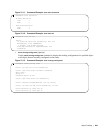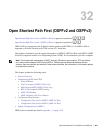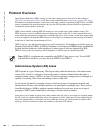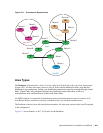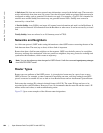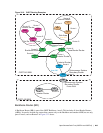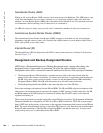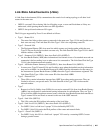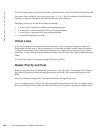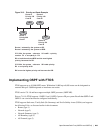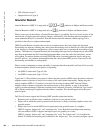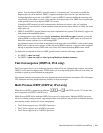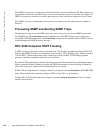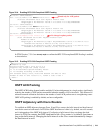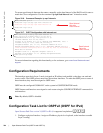Open Shortest Path First (OSPFv2 and OSPFv3) | 697
Link-State Advertisements (LSAs)
A Link-State Advertisement (LSA) communicates the router's local routing topology to all other local
routers in the same area.
• OSPFv3 can treat LSAs as having link-local flooding scope, or store and flood them as if they are
understood, while ignoring them in their own SPF algorithms.
• OSPFv2 always discards unknown LSA types.
The LSA types supported by Force 10 are defined as follows:
• Type 1 - Router LSA
• The router lists links to other routers or networks in the same area. Type 1 LSAs are flooded across
their own area only. The Link-State ID of the Type 1 LSA is the originating router ID.
• Type 2 - Network LSA
• The Designated Router (DR) in an area lists which routers are joined together within the area.
Type 2 LSAs are flooded across their own area only. The Link-State ID of the Type 2 LSA is the IP
interface address of the DR.
• Type 3 - Summary LSA (OSPFv2), Inter-Area-Prefix LSA (OSPFv3)
• An Area Border Router (ABR) takes information it has learned on one of its attached areas and can
summarize it before sending it out on other areas it is connected to. The Link-State ID of the Type
3 LSA is the destination network number.
• Type 4 - AS Border Router Summary LSA (OSPFv2), Inter-Area-Router LSA (OSPFv3)
• In some cases, Type 5 External LSAs are flooded to areas where the detailed next-hop information
may not be available. An Area Border Router will (ABR) flood the information for the router (i.e.
the Autonomous System Border Router (ASBR) where the Type 5 advertisement originated. The
Link-State ID for Type 4 LSAs is the router ID of the described ASBR.
• Type 5 - External LSA
• These LSAs contain information imported into OSPF from other routing processes. They are
flooded to all areas, except stub areas. The Link-State ID of the Type 5 LSA is the external
network number.
• Type 7
• Routers in a Not-So-Stubby-Area (NSSA) do not receive external LSAs from Area Border Routers
(ABRs), but are allowed to send external routing information for redistribution. They use Type 7
LSAs to tell the ABRs about these external routes, which the Area Border Router then translates to
Type 5 external LSAs and floods as normal to the rest of the OSPF network.
• Type 8 - Link LSA (OSPFv3)
• This LSA carries the IPv6 address information of the local links.
• Type 9 - Link Local LSA (OSPFv2), Intra-Area-Prefix LSA (OSPFv3)
• For OSPFv2, this is a link-local “opaque” LSA as defined by RFC2370.
• For OSPFv3, this LSA carries the IPv6 prefixes of the router and network links.
• Type 11 - Grace LSA (OSPFv3)
• For OSPFv3 only, this LSA is a link-local “opaque” LSA sent by a restarting OSPFv3 router
during a graceful restart.



